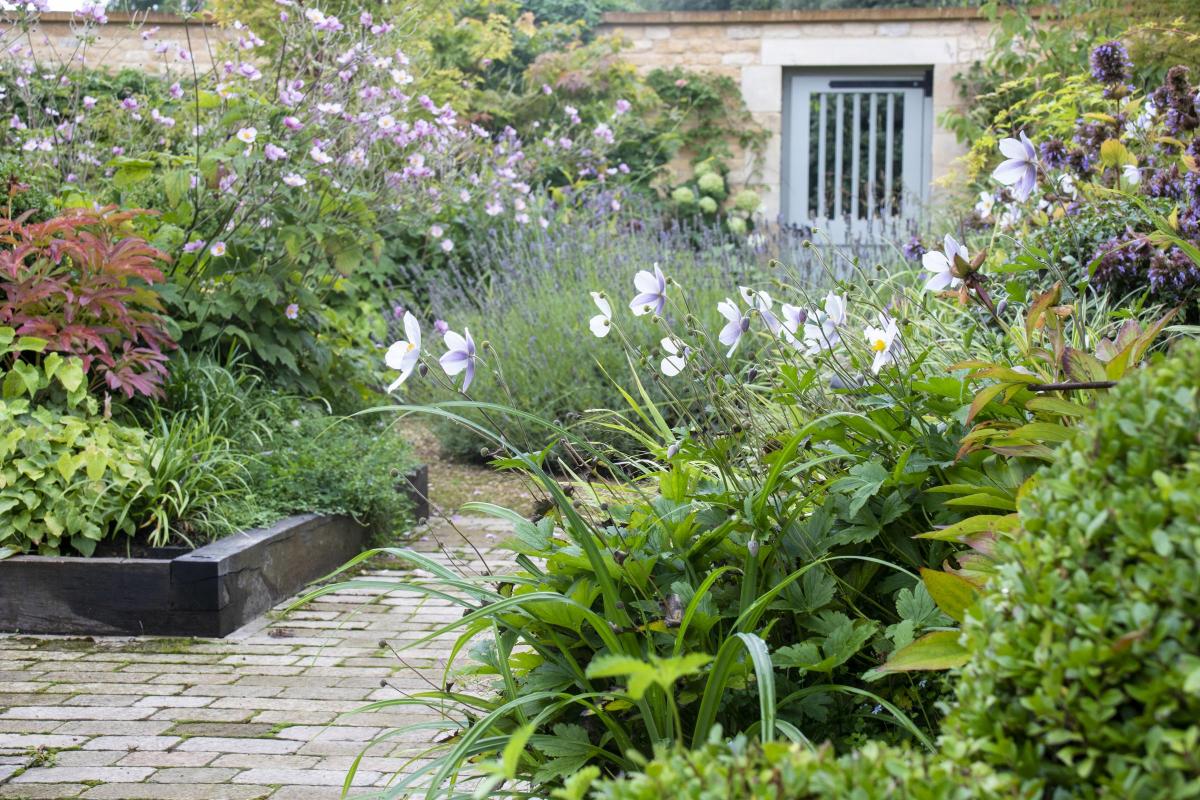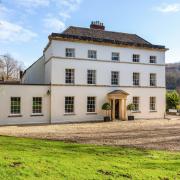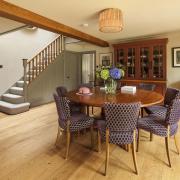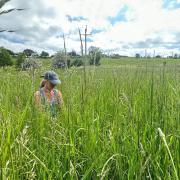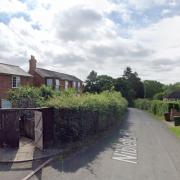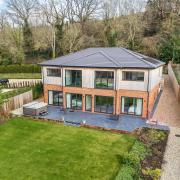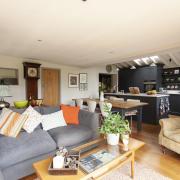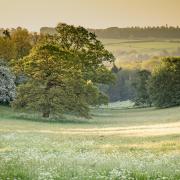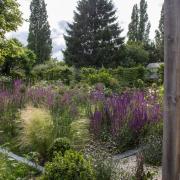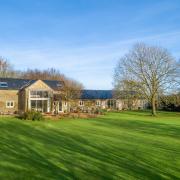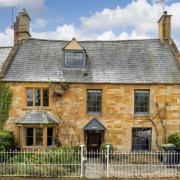Gardens are so much an expression of personal taste that a change in ownership leads inevitably to alterations. Sometimes this is merely a tweaking of the plants, sometimes a complete revolution.
Greenfields Farm, Wyck Rissington, has changed hands since my last visit nine years ago and I’m curious to see if anything is different.
That things have moved on is apparent from the start. The drive, once long and straight, now has a sinuous route, the front door has moved and the house has been considerably altered and enlarged.
Yet, despite all this, the essence of the garden remains, with a gradual movement from more formal areas into a naturalistic style that blends seamlessly with the countryside beyond.
New owner Graham Wild tells me that the garden was what initially attracted him and his partner: ‘It was one of the reasons for buying the house.
‘We just wanted to develop what was already there rather than change it very much.’
Cotswold designer Justin Spinks, who was brought in to oversee the project, is also unwilling to make unnecessary alterations when redesigning a garden.
‘Justin doesn't like to remove anything, which is already there,’ Graham tells me. ‘He's very, very reluctant to cut down a tree or move something which is already there, which I admire.’
The new alignment of the drive is a result of Graham’s long association with China: ‘I have Chinese connections and the Chinese don't like things straight because it means money is leaving,’ he explains. ‘So, we made it meander.’
On my last visit, the parking area was immediately behind house. It’s now moved to a more unobtrusive spot, resulting in a new area of garden.
Originally, this was going to be raised vegetable beds but a change of mind has seen the wood-edged beds planted instead with flowers.
‘We decided it would look messy. So, we decided to go for a different look.’
The starting point was an existing acer – ‘We thought it was nice as it changes colour and that gave us the idea.’ There are now Japanese specimen trees, including Prunus ‘Taihaku’, and Acer palmatum ‘Seiryu’, in each of the eight beds, which are set into paving.
These are underplanted with a mix of plants, including hydrangeas, osmanthus clipped into balls, Anemone ‘Wild Swan’, hostas, and carex.
Changing style partway through the work meant making compromises as it was deemed too difficult to remove the beds, and Graham is considering further alterations: ‘I think in the future, we may raise the footpath with Japanese stones all the way across.’
Part of the design brief was to create more secluded areas and this area is now separated from the main garden by a high wall and gate.
Even so, the gate allows glimpses through and encourages the urge to explore.
A terrace has been laid outside a newly constructed and plant-filled conservatory. Low Cotswold stone walls separate the space from the main lawn while still maintaining the view across the Windrush valley.
‘I think that view is one of the highlights of the house,’ comments Graham.
The terrace has been laid with old flagstones in a mix of shapes and sizes, chosen because they give a more ‘random’ look.
This large expanse of hard landscaping is softened by planting, including rosemary, lavender and clipped domes of yew set in a mass of mixed thymes.
Along the back of the house, raised beds that I remember as blocks of single things – Stipa tenuissima and Helichrysum italicum (the curry plant) – with specimen pear trees have been kept but replanted.
‘We’ve still got the two pear trees but we’ve tried to make it busier.’
Now a mix of potentilla, Hylotelephium ‘Jose Aubergine’ (sedum), Stachys byzantina, and Eryngium bourgatii, keeps colour and interest throughout the year, while against the house, there are roses, helianthemum and iris.
A hedge divides the formal pond from the main garden and this has been lowered to allow views out over the rest of the garden.
Nearby, a new avenue of pleached hedges of malus (crab apples) creates another ‘garden room’ and year-round structure.
Originally, the beds underneath were planned as cutting beds but the final planting has yet to be decided so they’ve been filled with cosmos as a stopgap.
On the opposite side of the main lawn there are new borders with nepeta, geranium, penstemon and phlomis in a planting scheme that spans the seasons. A striking sculpture that catches the breeze was sold with the house.
Move further away from the house, and the garden becomes more informal still. The wildlife pond that I remembered is still there, backed by shrubs and trees and with a small jetty.
Nearby, the silver birch grove gives year-round interest although one line may have to be removed as they are too close to a sequoia planted by the previous owners.
One of the autumn features of the garden are the malus trees (crab apples) and there were around nine different varieties when Graham bought the house. These are covered in fruit, with fallen crab apples adding splashes of colour to the grass below.
Elsewhere, fruit cages have been removed and the small orchard of fruit trees, including apples, cherry and quince, has been extended.
A new development is damming the drain water ditch to make the water deeper.
‘It will create a totally different look,’ comments Graham.
Further out into the far edges of the garden, ground has been cleared: ‘There was quite a lot of jungle, overgrown blackberries and everything. We opened it up so we get the view.’
Aside from removing some withy beds, the final planting has yet to be decided although it will be informal to provide a smooth transition to the agricultural fields beyond.
Greenfields farm, it seems, is a project that’s still developing.
Instagram: @thechattygardener
Facebook: The Chatty Gardener
Twitter: @ChattyGardener



